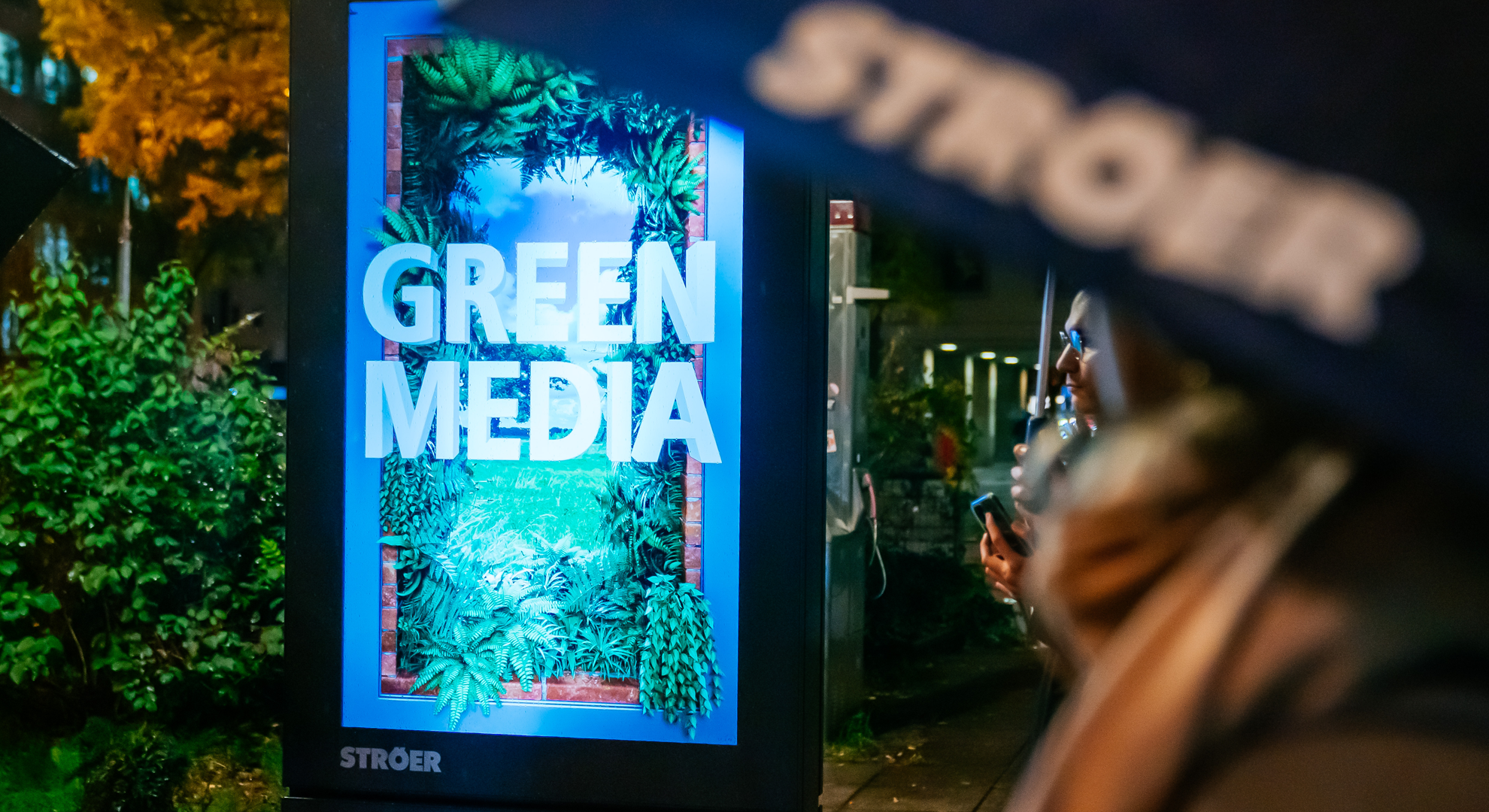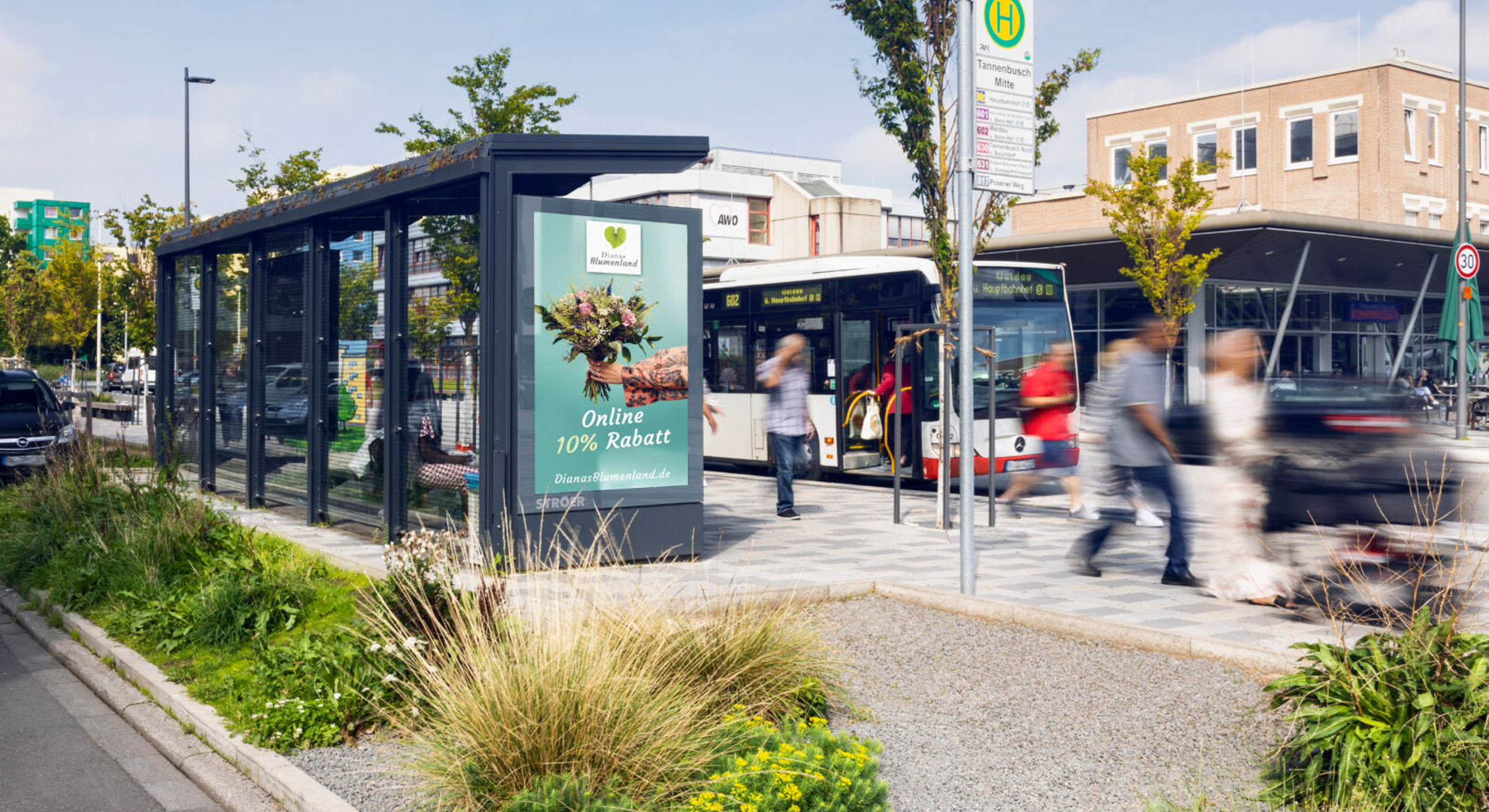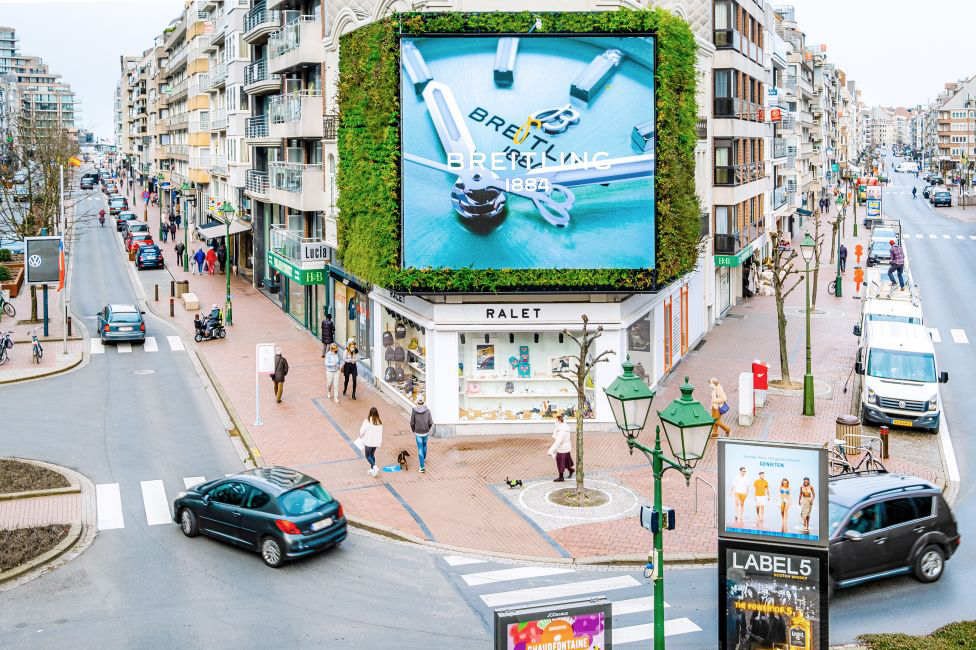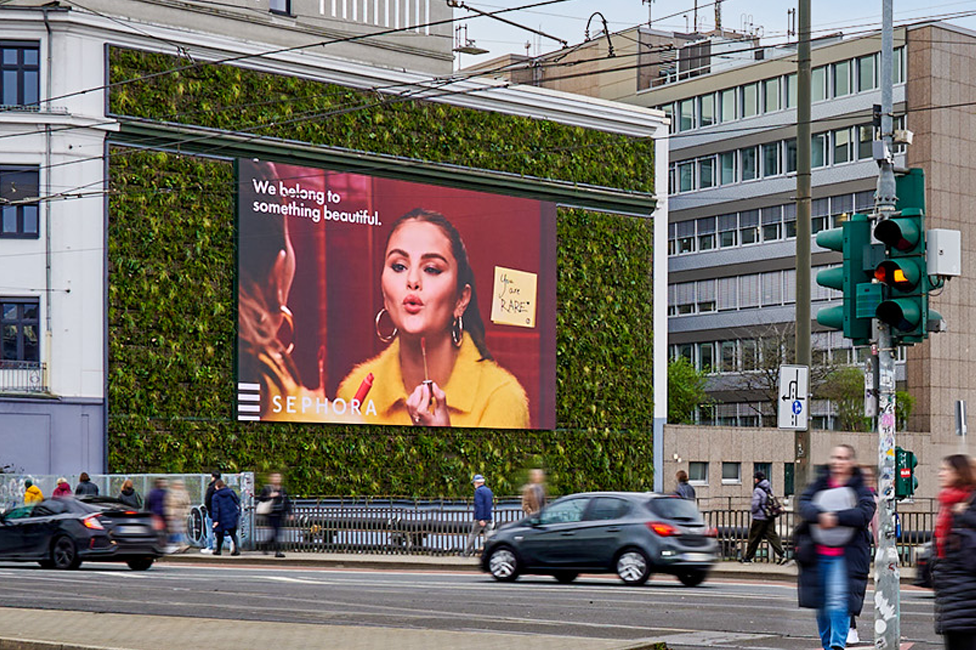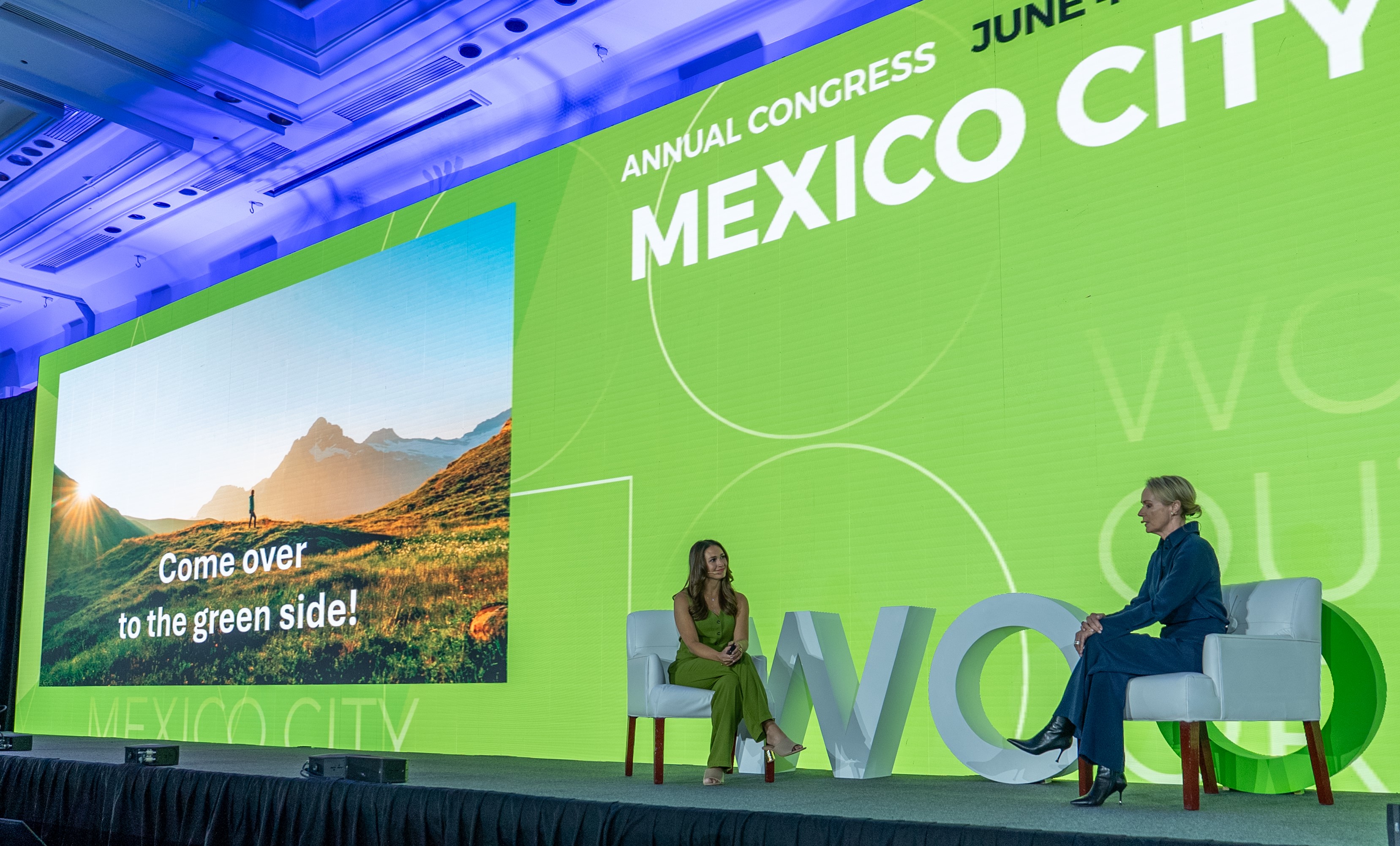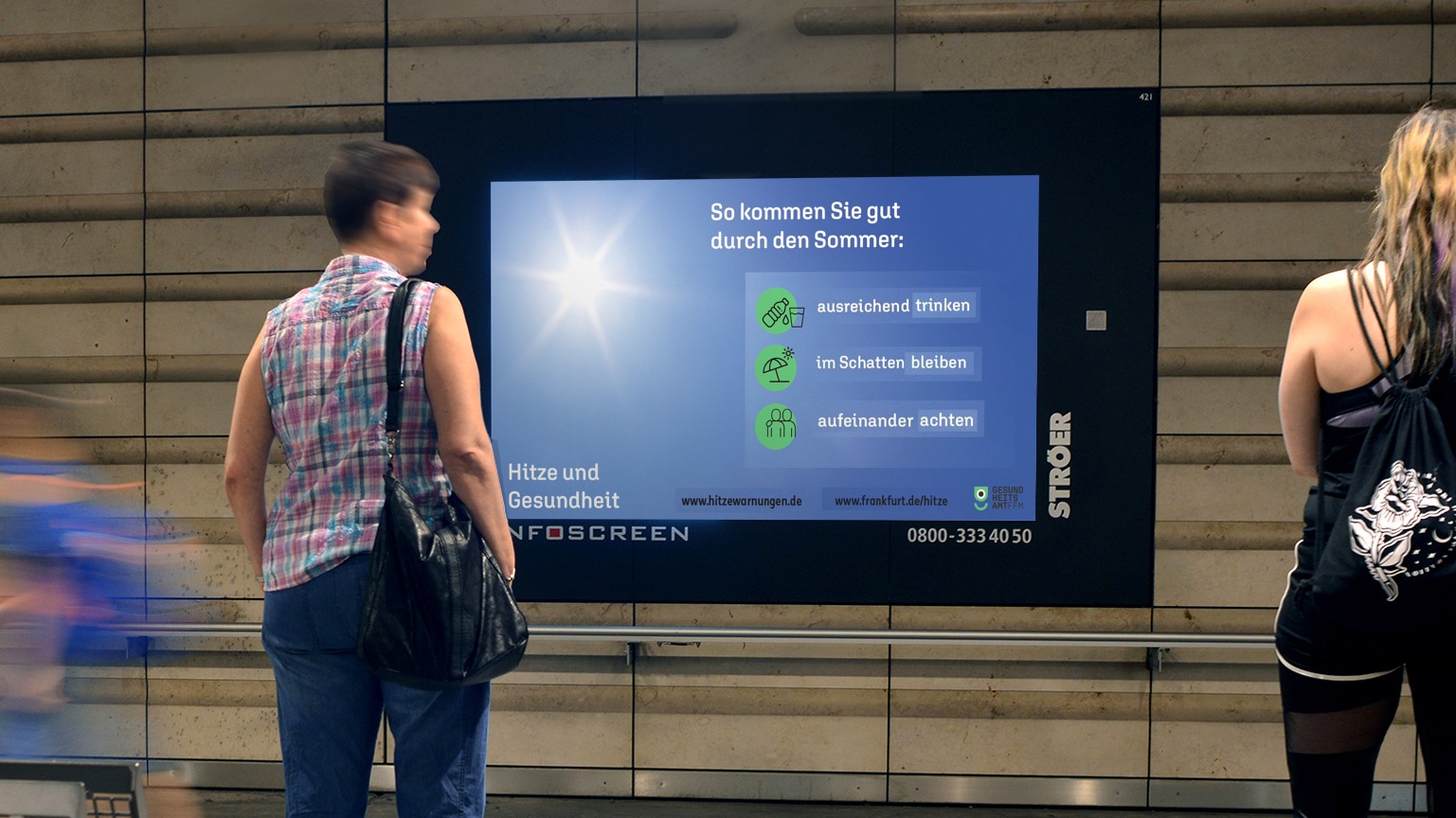The focus of improving the environmental friendliness of the out-of-home advertising portfolio is on the digitalisation of out-of-home media. Our aim is also to support cities in resilient, environmentally friendly urban development. Greening concepts are therefore also an integral part of Ströer's sustainability strategy and municipal cooperation.
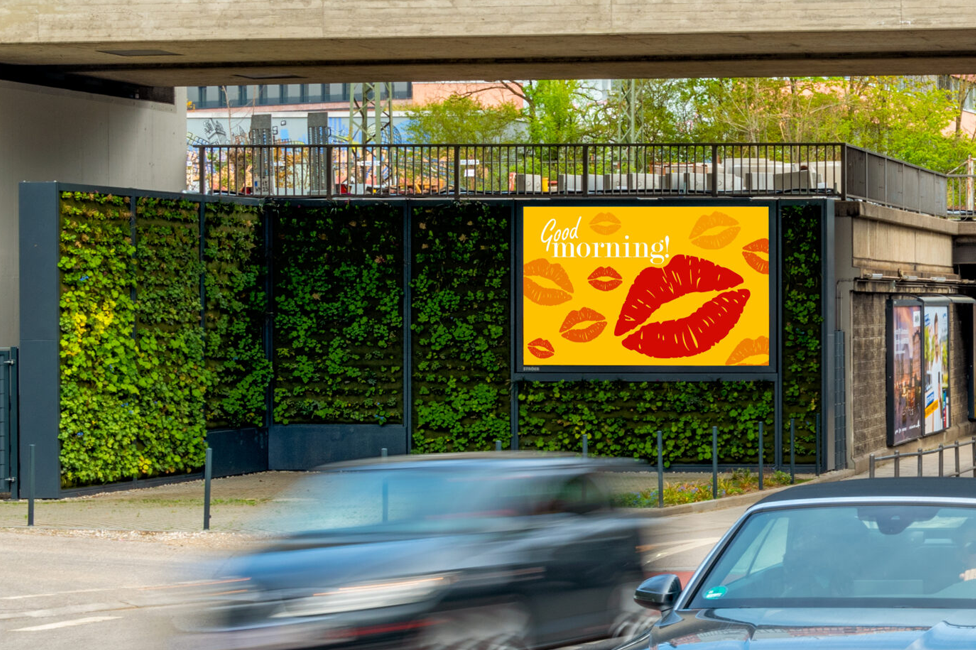
Improving the environmental footprint of the OOH portfolio
The focus of improving the environmental footprint of the out-of-home advertising portfolio is the digitalisation of media displays in public spaces. The outdoor advertising industry has been working on increasing efficiency and saving energy for many years. We aim to operate our business model as efficiently and therefore as resource-efficiently as possible. For example, we have worked on the use of improved LED technology, individually controlled screen brightness depending on the surrounding light conditions, shutting down the devices at night, and adjusting the colour contrasts. These and other measures not only reduce power consumption but also significantly increase the service life of digital advertising media.
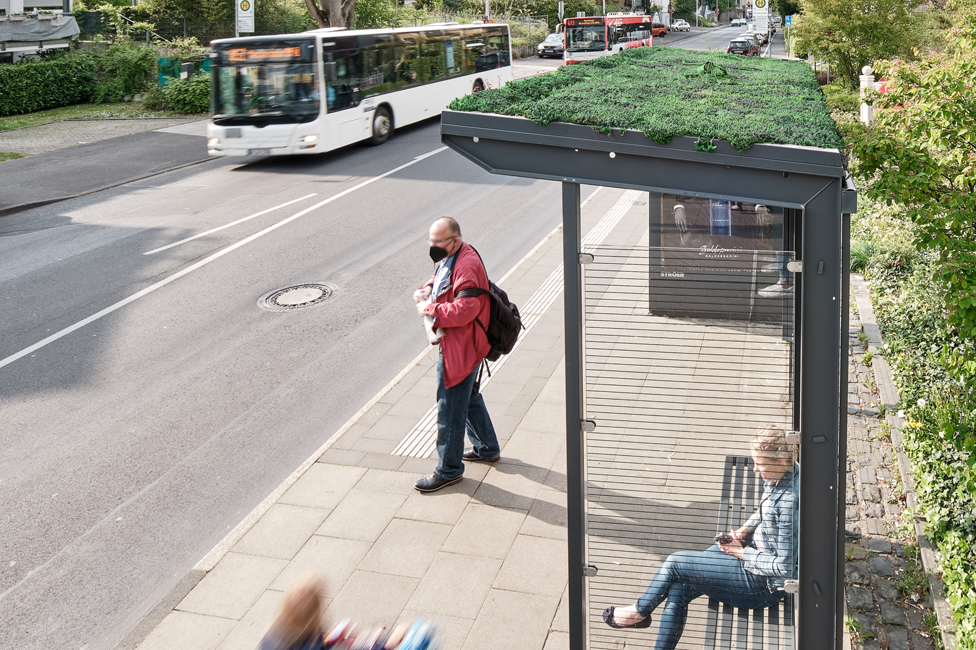
Greening concepts
The greening of street furniture is an important component in the further development of infrastructure. In the coming years, the number of green bus shelters and pillars is to be continuously increased, making a visible contribution to improving the quality of life in cities.
The green street furniture serves as biological stepping stones, providing micro-habitats for insects and plants. To this end, the bus shelter is equipped with a drainage foam mat made of recycled material and a substrate layer of pumice stone and planted with various sedum and plant species in the interests of biodiversity. Sedum belongs to the thick-leaved family and is also known as "stonecrop". The different species bloom at different times of the year, so that the green roof can provide food for insects until late in the autumn. Other biotope elements such as lava rock or dead wood provide further food and nesting opportunities for various insects. The thick fleshy leaves of sedum species store water and cool the air through evaporation. Despite storing water, the roof planting remains relatively light: at maximum water saturation, it only weighs around 50 kilograms per square metre. Plants can also reduce air pollution by binding particulate matter and CO2. Scientific studies have shown that green spaces along inner-city streets reduce air pollution by up to 30 per cent.
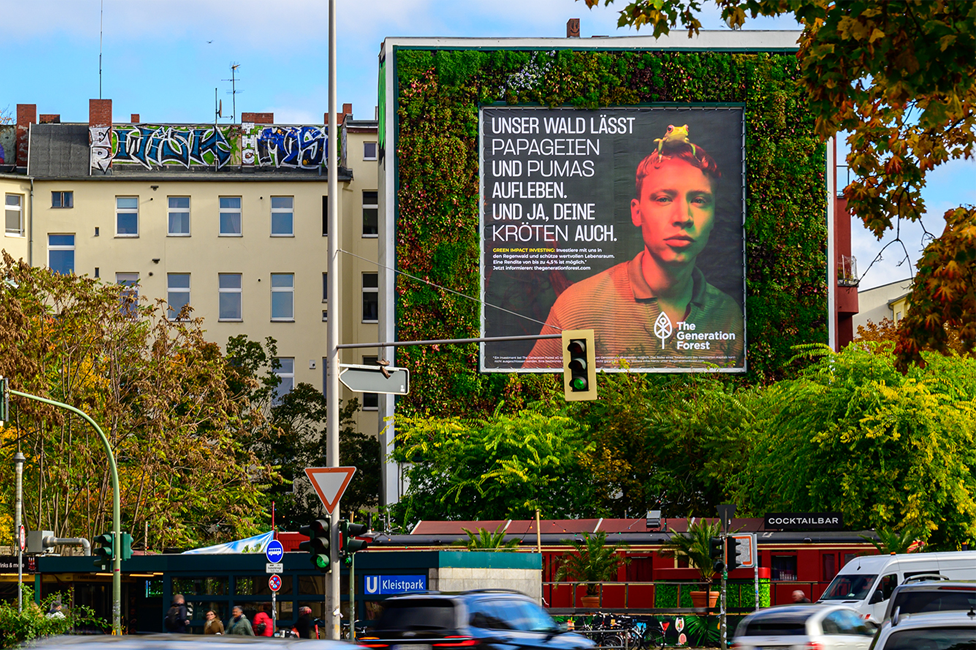
Vertical gardens
In several cities in Germany and Belgium, blowUp media, a subsidiary of the Ströer Group, has already planted large, vertical "green gardens" with various types of plants. Embedded in these are digital screens, mostly powered by green electricity, which are available to advertisers and partners.
In Berlin, Düsseldorf, Munich (Germany), Knokke, and Antwerp (Belgium), such innovative green media locations are helping to improve air quality in the cities, while at the same time minimizing the carbon footprint and creating a green framework for brands.

